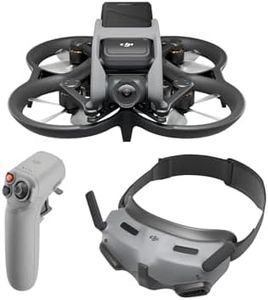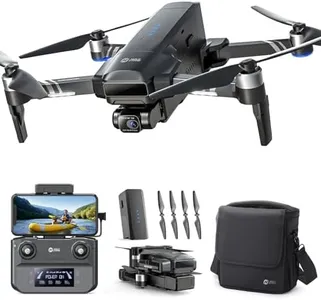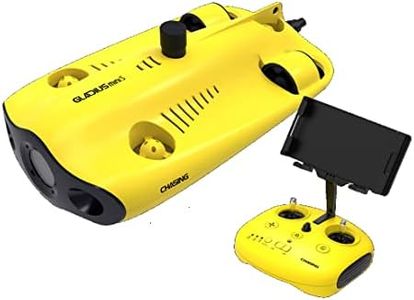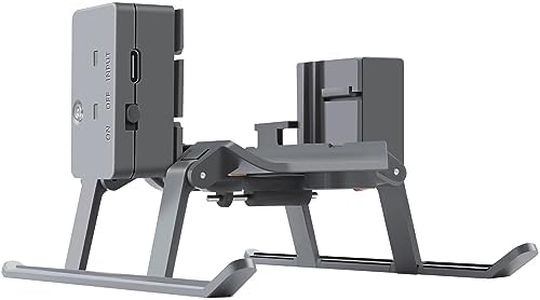We Use CookiesWe use cookies to enhance the security, performance,
functionality and for analytical and promotional activities. By continuing to browse this site you
are agreeing to our privacy policy
9 Best Drone For Fishing
From leading brands and best sellers available on the web.Buying Guide for the Best Drone For Fishing
Choosing a drone for fishing is a smart way to extend your reach, scout out the best spots, and even deploy bait where you need it. The right drone can make your fishing trips more successful and enjoyable. When picking a drone for fishing, you'll want to look beyond just any drone: the features that matter for aerial photography or racing might not always suit fishing needs. Focus on stability, payload capacity, battery life, durability, and user-friendly controls. With the right approach, you can find a model tailored to your fishing style and environment.Payload CapacityPayload capacity is the maximum weight the drone can safely carry, which is critical for fishing because you'll likely want to drop bait or lines from the air. Too low a capacity means you might be limited on the type of bait or the length of lines you can use. Drones with higher payloads (usually above 500 grams) are suitable for heavier bait rigs, while lower capacities (200–400 grams) work for lighter setups. Assess what kind of fishing you do most—if you fish for larger species needing bigger rigs, aim for higher payloads; for lighter coastal or freshwater fishing, a modest payload works.
Flight TimeFlight time refers to how long the drone can stay airborne per battery charge. This is crucial when you're scouting wide stretches of water or making multiple bait drops. Drones generally offer flight times from around 15 to 30 minutes. Shorter flight times require more battery changes and limit range, while longer times give you more flexibility and less interruption. If you plan to fish large lakes or beaches, opt for longer flight times—if you're mainly casting short distances or using dockside, a shorter duration might be enough.
GPS and Return-to-Home (RTH)GPS capabilities and Return-to-Home features allow the drone to lock in its position, hover steadily, and safely return to its takeoff spot. These are important for fishing because wind and water can make manual navigation tricky, and if a drone loses signal over water, you'll want it to return automatically. High-quality GPS with precise RTH is best for open water or offshore use. If you fish in smaller, controlled areas, basic GPS might suffice, but for ocean, large lake, or remote spots, advanced GPS/RTH is a must-have.
Water ResistanceWater resistance is the drone’s ability to survive splashes or even submersion. Fishing environments are wet and unpredictable; weather can change quickly, or the drone might accidentally dip into the water. Water-resistant or waterproof drones are much less likely to be damaged in these events. If you fish in saltwater conditions or anticipate rough environments, consider drones with high water resistance. For calmer, sheltered freshwater fishing, splash-proof features might be enough.
Stability and Wind ResistanceStability and wind resistance indicate how well the drone can stay steady and maintain position in gusty or unpredictable weather, typical near wetlands, lakes, or coasts. Drones with high wind resistance (often rated by wind speed in meters per second) can fly in poorer weather and reduce risk of drifting off course. If you fish where winds are typically strong—beaches, cliffs, open lakes—select drones with higher wind resistance; in sheltered bays or ponds, basic stability control may suffice.
Easy-to-Use ControlsEasy-to-use controls are important, especially if you're new to drones or need to multitask with fishing gear. Smart features like one-touch bait release, automated flight paths, and intuitive remotes make the experience smoother and safer. If you’re not experienced with drones, prioritize models with simple controls, good visual displays, or app integration. For tech enthusiasts or those who want full manual control, look for models that allow custom settings and programmable routes.










